Some Truly Unique Universes By Chromattix On DeviantArt! 😍







Some truly unique universes by Chromattix on DeviantArt! 😍
More Posts from Sharkspaceengine and Others










Triangulum Log - Post 1 - The Outskirts.
My first adventure brings us to this Yellow Super Giant and companion black hole. The system is young and filled with many gas giants that still glow with the heat of their formation.
All of the planets orbit far from the star, the nearest having a orbital radius of 10.57 AU. Numerous planets are also double planets including a double Jupiter as shown above.
More pics of this system and my thoughts on if this system could actually exist in the real universe to come.






Triangulum Log - Post 4 - Vista System (Planet 2)
Here we come across the system’s second planet, a warm desert world. This rocky world orbits 0.41 AU from the sun and has a mass roughly one fifth that of Earth. It is a hot world covered in a thin Carbon Dioxide/ Sulfur Dioxide atmosphere with one tenth the atmospheric pressure of Earth. The planet is tidally locked to the sun and has an average surface temperature of 231° F on the day-side.
High Resolution Pics
Image 1
Image 2
Image 3
Image 4
Image 5
Image 6

Cold blue gas giant and one of it's asteroid moons.

Picture of the day - January 9, 2019
Ringed Desert-Like moon with life and a large moon.
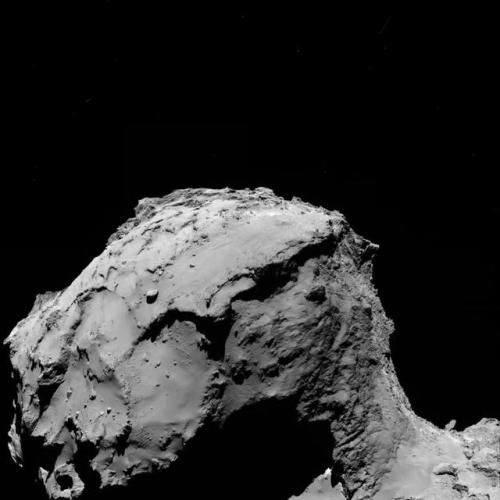
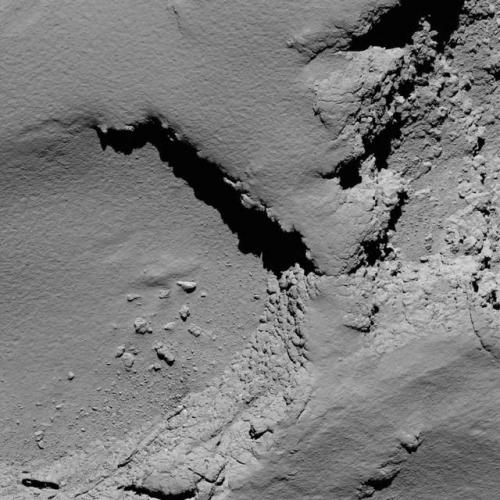
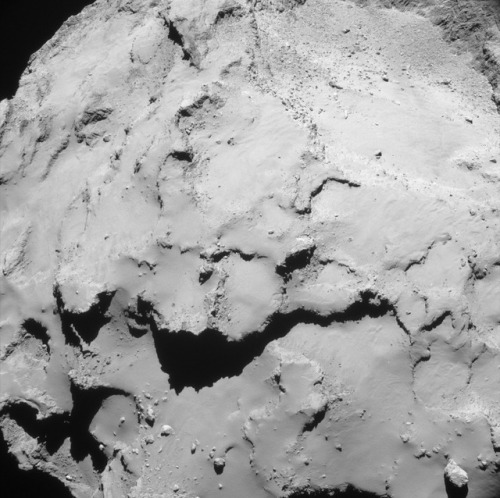
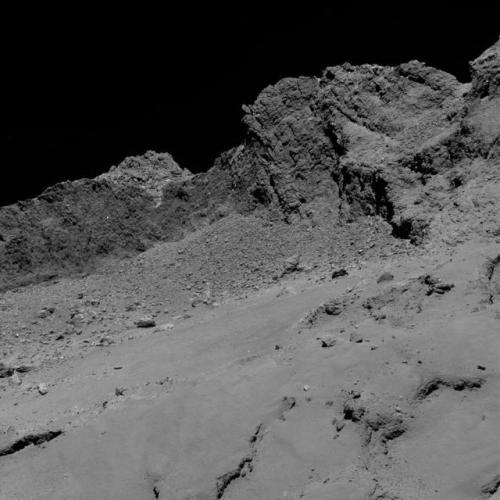
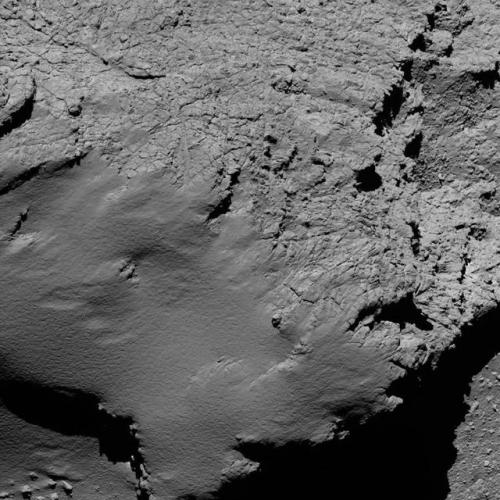
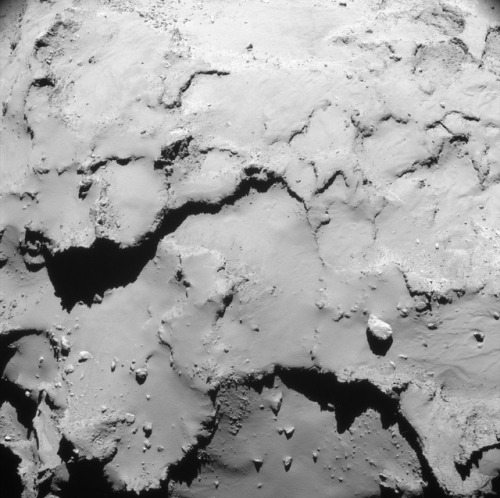
September 30, 2016: Views of Comet 67P/Churyumov-Gerasimenko captured by the Rosetta probe during the spacecraft’s final descent.
(ESA)

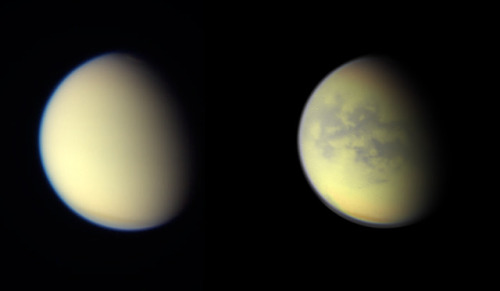




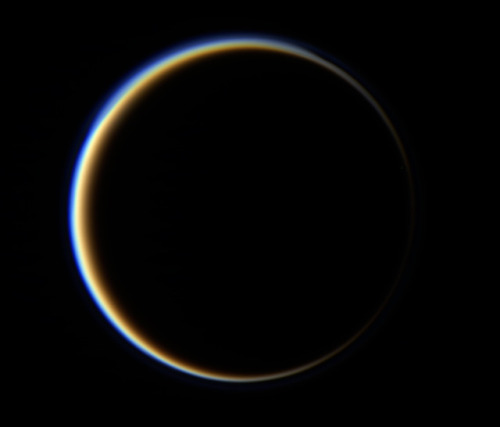

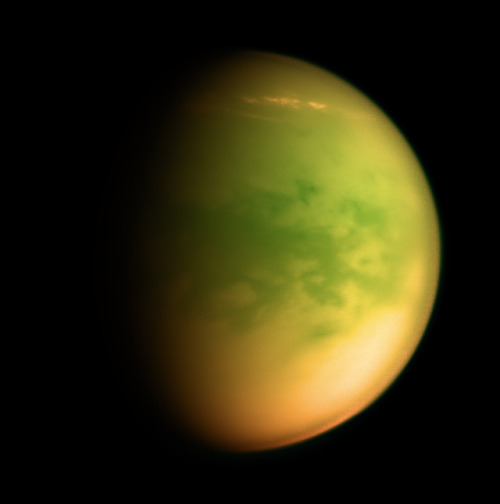
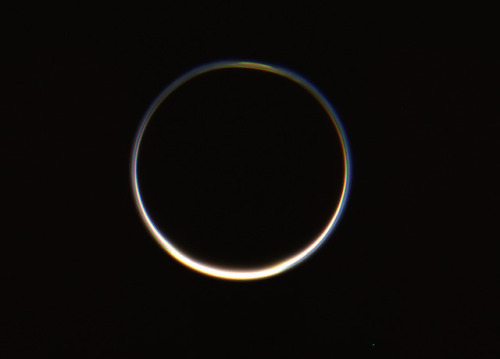
Images taken by the Cassini & Voyager spacecraft of Titan, Saturn’s largest moon. Titan is the only moon in the Solar System to have a thick atmosphere and lakes of hydrocarbons (methane and liquid ethane).
To know more about the moon Titan click here
Image credit: NASA/JPL/SSI/Cassini & Voyager ( precessed by: Kevin Gill )

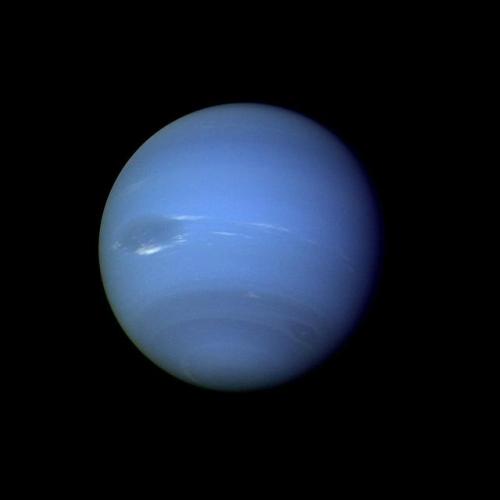
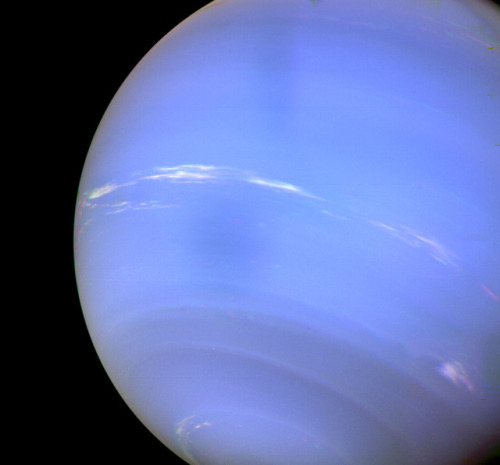
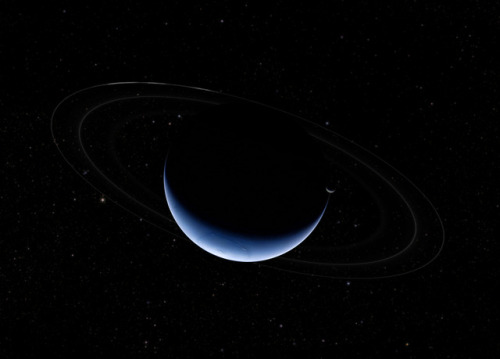
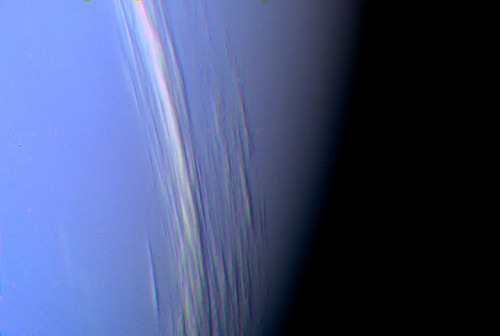
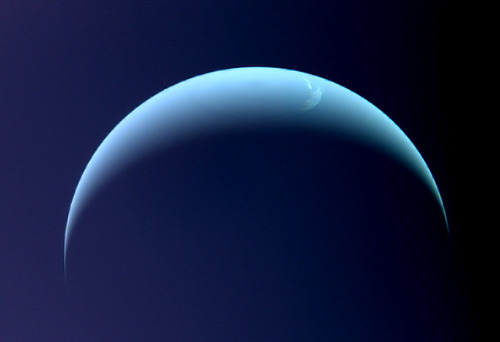
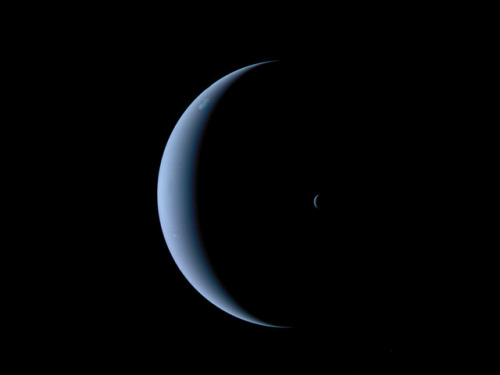
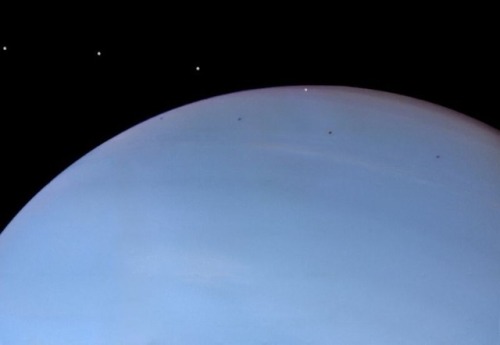
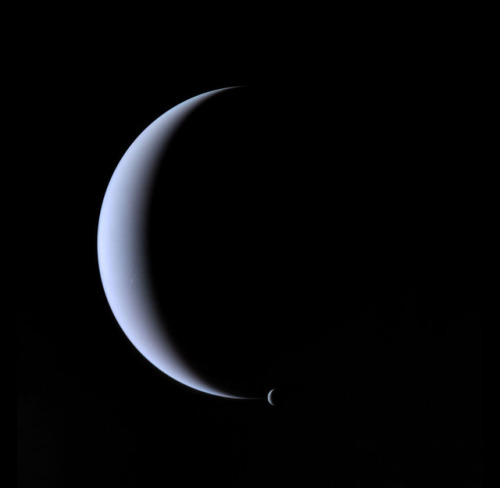
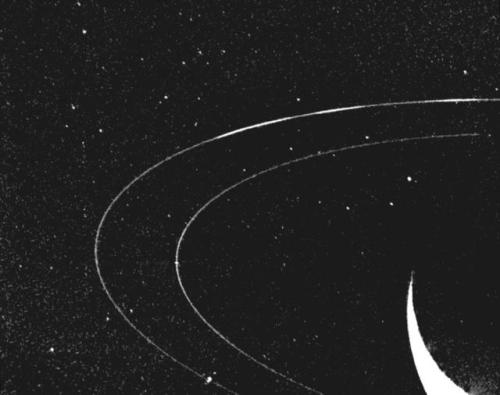
Neptune ♆
On this day in 1846 was discovered the planet Neptune.
The ice giant Neptune was the first planet located through mathematical predictions rather than through regular observations of the sky. (Galileo had recorded it as a fixed star during observations with his small telescope in 1612 and 1613.) When Uranus didn’t travel exactly as astronomers expected it to, a French mathematician, Urbain Joseph Le Verrier, proposed the position and mass of another as yet unknown planet that could cause the observed changes to Uranus’ orbit. After being ignored by French astronomers, Le Verrier sent his predictions to Johann Gottfried Galle at the Berlin Observatory, who found Neptune on his first night of searching in 1846. Seventeen days later, its largest moon, Triton, was also discovered.
Neptune is invisible to the naked eye because of its extreme distance from Earth. Interestingly, the highly eccentric orbit of the dwarf planet Pluto brings Pluto inside Neptune’s orbit for a 20-year period out of every 248 Earth years. Pluto can never crash into Neptune, though, because for every three laps Neptune takes around the Sun, Pluto makes two. This repeating pattern prevents close approaches of the two bodies.
Nearly 4.5 billion kilometers (2.8 billion miles) from the Sun, Neptune orbits the Sun once every 165 years.
Uranus’ blue-green color is also the result of atmospheric methane, but Neptune is a more vivid, brighter blue, so there must be an unknown component that causes the more intense color.
Despite its great distance and low energy input from the Sun, Neptune’s winds can be three times stronger than Jupiter’s and nine times stronger than Earth’s.
Winds on Neptune travel faster than the speed of sound.
In 1989, Voyager 2 tracked a large, oval-shaped, dark storm in Neptune’s southern hemisphere. This “Great Dark Spot” was large enough to contain the entire Earth.
Neptune has five known rings. Voyager 2’s observations confirmed that these unusual rings are not uniform but have four thick regions (clumps of dust) called arcs. The rings are thought to be relatively young and short-lived.
Neptune has 14 known moons, six of which were discovered by Voyager 2.
Triton, Neptune’s largest moon, orbits the planet in the opposite direction compared with the rest of the moons, suggesting that it may have been captured by Neptune in the distant past.
To know more about the planet Neptune click here and here.
Images credit: NASA/JPL- Caltech (some images processed by Kevin M. Gill)


Pictures of the day - January 16, 2019
Comets
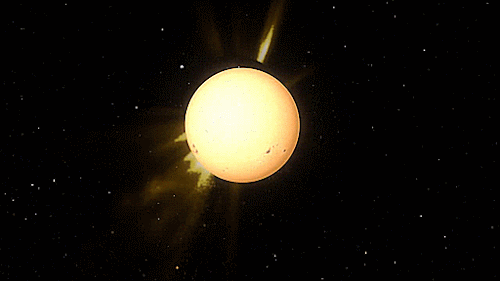


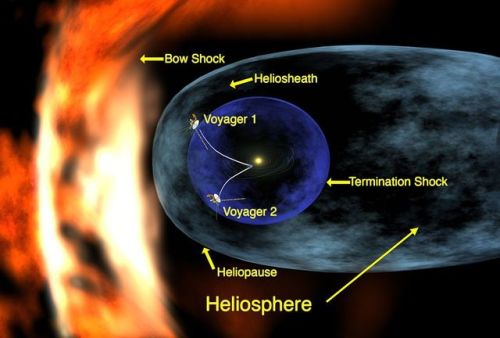
The heliosphere is the bubble-like region of space dominated by the Sun, which extends far beyond the orbit of Pluto. Plasma “blown” out from the Sun, known as the solar wind, creates and maintains this bubble against the outside pressure of the interstellar medium, the hydrogen and helium gas that permeates the Milky Way Galaxy. The solar wind flows outward from the Sun until encountering the termination shock, where motion slows abruptly. The Voyager spacecraft have explored the outer reaches of the heliosphere, passing through the shock and entering the heliosheath, a transitional region which is in turn bounded by the outermost edge of the heliosphere, called the heliopause. The shape of the heliosphere is controlled by the interstellar medium through which it is traveling, as well as the Sun and is not perfectly spherical. The limited data available and unexplored nature of these structures have resulted in many theories. The word “heliosphere” is said to have been coined by Alexander J. Dessler, who is credited with first use of the word in the scientific literature.
On September 12, 2013, NASA announced that Voyager 1 left the heliopause on August 25, 2012, when it measured a sudden increase in plasma density of about forty times. Because the heliopause marks one boundary between the Sun’s solar wind and the rest of the galaxy, a spacecraft such as Voyager 1 which has departed the heliosphere, can be said to have reached interstellar space. source
-
 emilyayers13 reblogged this · 4 months ago
emilyayers13 reblogged this · 4 months ago -
 worldbuilding-ijya-enid reblogged this · 1 year ago
worldbuilding-ijya-enid reblogged this · 1 year ago -
 noisyperfectionlion liked this · 1 year ago
noisyperfectionlion liked this · 1 year ago -
 lucy66994 liked this · 1 year ago
lucy66994 liked this · 1 year ago -
 mazzarop liked this · 1 year ago
mazzarop liked this · 1 year ago -
 johneyblaze reblogged this · 1 year ago
johneyblaze reblogged this · 1 year ago -
 eroticfox reblogged this · 2 years ago
eroticfox reblogged this · 2 years ago -
 metamaterials reblogged this · 2 years ago
metamaterials reblogged this · 2 years ago -
 dori-donlordozza-jzs147 liked this · 2 years ago
dori-donlordozza-jzs147 liked this · 2 years ago -
 kintsugi-tigerstripes reblogged this · 2 years ago
kintsugi-tigerstripes reblogged this · 2 years ago -
 metamaterials liked this · 2 years ago
metamaterials liked this · 2 years ago -
 inksvn-e reblogged this · 2 years ago
inksvn-e reblogged this · 2 years ago -
 inksvn-e liked this · 2 years ago
inksvn-e liked this · 2 years ago -
 tokyopandaclub reblogged this · 2 years ago
tokyopandaclub reblogged this · 2 years ago -
 tokyopandaclub liked this · 2 years ago
tokyopandaclub liked this · 2 years ago -
 dee-xm reblogged this · 2 years ago
dee-xm reblogged this · 2 years ago -
 sizzlingbreadturtle liked this · 2 years ago
sizzlingbreadturtle liked this · 2 years ago -
 la-bruba liked this · 2 years ago
la-bruba liked this · 2 years ago -
 nosnhojnnaylime liked this · 2 years ago
nosnhojnnaylime liked this · 2 years ago -
 exprssglow liked this · 3 years ago
exprssglow liked this · 3 years ago -
 luna420666 liked this · 3 years ago
luna420666 liked this · 3 years ago -
 kqvrn liked this · 3 years ago
kqvrn liked this · 3 years ago -
 alexlove1994 reblogged this · 3 years ago
alexlove1994 reblogged this · 3 years ago -
 alexlove1994 liked this · 3 years ago
alexlove1994 liked this · 3 years ago
My Space Engine Adventures, also any space related topic or news. www.spaceengine.org to download space engine. The game is free by the way. Please feel free to ask me anything, provide suggestions on systems to visit or post any space related topic.Check out my other blog https://bunsandsharks.tumblr.com for rabbit and shark blog.
294 posts
